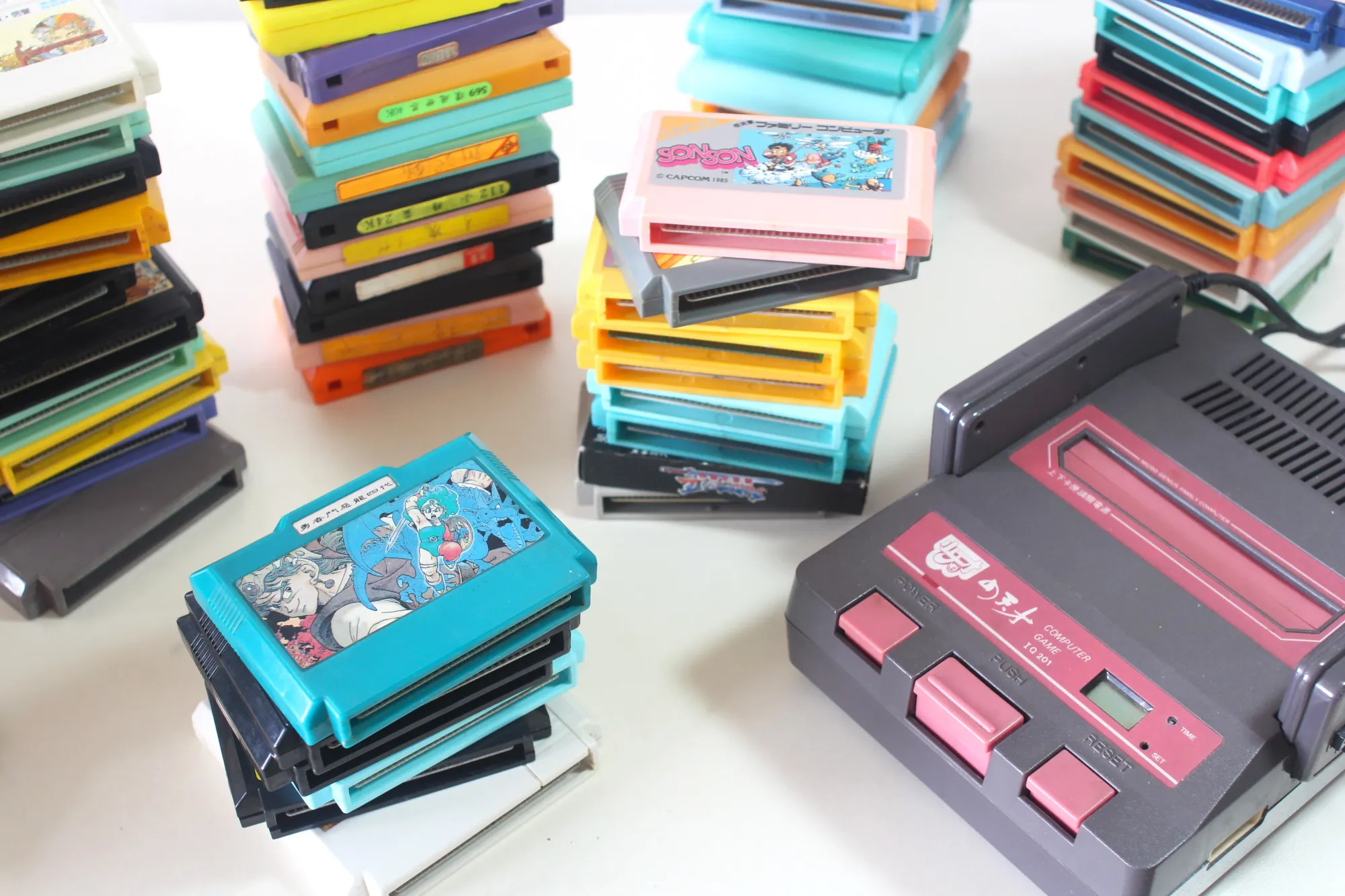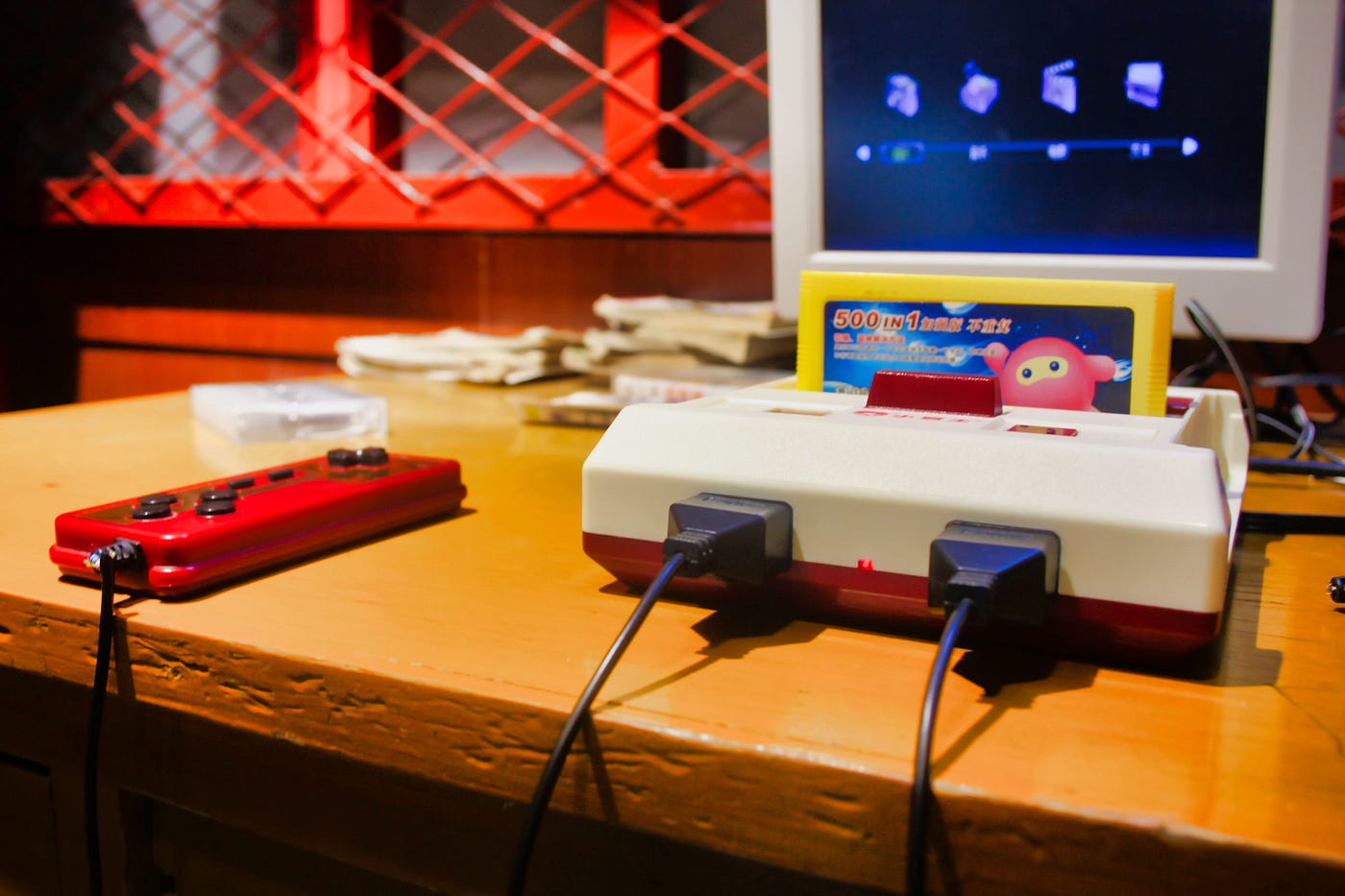Clones: The Past and Future of Unofficial Consoles
The rise of retro gaming has transformed the once-shadowy clone console market into a legitimate global business

The 1972 Gallery is an interesting place. Following in the Chinese tradition of reclaiming old buildings, this is an art museum nestled inside an old prison, with 3D murals of comic book characters covering its high outside walls. Avant garde sculptures litter the lawn, while artistic tableaux fill the various buildings, waiting for Chinese teenagers eager to take selfies in these representations of the past.
The largest building houses, among other things, a museum of consumer electronics. Among the items is one that’s especially appropriate for a display inside of a prison: A Famicom video game console, the kind of thing that was illegal to import to China not so long ago. Visit on the right day, and you’ll even find it hooked up to a monitor, where you might sit for a minute and play some Contra.
Take a closer look, though, and you’ll see that this isn’t a Famicom at all. The colors certainly match as does the shape, but the guts of this machine had nothing to do with Nintendo. Rather, it is one of many variants on the Subor Xiao Bawang, or “Little Conqueror,” a nickname borrowed from any number of historical and literary figures.
The Little Conqueror is one of the best known of what are often called “Famiclones” — duplicates of the Famicom or NES that are intended for markets in which the official hardware is unavailable or prohibitively expensive. For many Chinese consumers, this knockoff system was their first real exposure to the world of interactive electronic entertainment.
Electronic hardware bootlegging has a long and messy history, but the duplication of video game hardware is of notable interest. The proprietary nature of most consoles means that they aren’t readily copied like other consumer electronic devices. Back in the day, a would-be manufacturer had a choice: Create their own system, or reverse engineer and clone the original hardware, an illegal act.
But what was once a black market business has undergone a renaissance of sorts in recent years. Between the expiration of certain key patents, the emergence of cheap electronics and off-the-shelf software, and the rise of retro gaming, the market for off-brand consoles has been both expanded and legitimized — and it’s looking to keep evolving.

The basic history of clone consoles is pretty well known at this point: In countries and regions where consumers couldn’t obtain official consoles, there were gray-market businesses ready to fill the demand with their own bootleg systems. While these devices were of questionable quality, they were also the only affordable option for much of the world.
Of course I knew all of this going in, but what I wasn’t prepared for was the scope of the clone phenomenon. Any collector can tell you about the Pegasus, PolyStation or Dendy, but those more famous bootlegs are just the tip of the iceberg.
The Ultimate Console Database lists hundreds of distinct console clones by dozens upon dozens of manufacturers. The Famiclones are the most famous, but one can find bootleg versions of many other consoles, including the Atari 2600, Sega Master System, Mattel Intellivision and the largely forgotten Emerson Arcadia 2001. And while these systems are typically associated with places like Hong Kong, Taiwan and Poland, the manufacturers truly span the globe.
In fact, what’s rarely remarked upon is the existence of American-manufactured clone hardware. One of the first clone devices was the Gemini, an official module for the ColecoVision that allowed the system to play Atari 2600 games. Atari sued Coleco for patent infringement, a case that the parties ultimately settled on the grounds that both could make more money with a licensing deal. However, Coleco actually had a strong legal defense: The Gemini was made with off-the-shelf parts and didn’t technically infringe on any of Atari’s proprietary hardware.
This and subsequent cases set a precedent for hardware clones. A company could not use any IP, software or patented hardware in creating their own consoles, but a manufacturer that could hack together a system with common parts might still slip through a gray area in the law.
For American manufacturers, this loophole was still a big legal risk. Licensing made more sense, and for a short time, officially licensed Atari and Intellivision clones could be found at the likes of Sears and Radio Shack. Manufacturers in other countries were not so cautious, and were more than happy to turn a profit with legally ambiguous knockoffs.
Clone consoles returned to the United States in the mid-2000’s as Nintendo’s patents started to expire. From that point on, Famiclones were fully legal as long as they didn’t ship with any pirated games, and manufacturers hit the ground running. One of the first available in the West was the Generation NEX, a generally unimpressive device that differed little from earlier clones except in one key area: Nintendo couldn’t stop it.

Shane Luis is the creator of Rerez, a YouTube channel dealing in video game hardware both past and present. Over the years, he’s featured a range of clone devices — the best, the worst and the strangest. Many of these systems are not the cheap bootlegs people tend to picture when thinking of clone consoles, but short-run niche devices made with a global audience in mind — and the number of devices seems to grow by the day.
Luis sees this explosion as a generally positive development. “Without a doubt, clone and emulation hardware has been getting better and better,” he says. “Mass production of these systems has created a competitive market where everyone is trying to make the best emulation system that they can.”
At the same time, he sees more of a future in a subset of these devices: “Due to recent major consoles becoming more PC like, the idea of having a ‘clone’ system is probably getting lost in the mix. Clone systems were popular when emulation wasn’t technically possible. Emulation platforms today serve the same function of clone consoles but have multiple advantages…A single emulation system running off of something as small as a cell phone can contain the digital file of every video game from every cartridge based video game system ever created.”
This is something that’s always worth remembering when thinking about retro gaming. While clones and true consoles may offer an aesthetically superior experience for the purist, it’s likely that most people who are exposed to older games are playing them via some form of emulation.
Emulation has a long, controversial and profound history within the video game industry. It’s likely that the entire concept of “retro gaming” wouldn’t exist without console emulators allowing enthusiasts to revisit games on those systems that they short-sightedly gave away. The popularity of emulators, in turn, gave rise to systems meant specifically to run them. Some of these are “microconsoles” meant to plug into a television, but the most popular ones are portable systems designed to resemble classic handhelds.
One of the first such devices I heard of was the Dingoo A320, a Linux-based handheld released in 2009. It was an all-purpose media player that came with a few built-in games, but the most appealing aspect of the Dingoo was its ability to emulate a range of other systems. The Dingoo is far from the first of its kind (similar devices were available for sale as far back as 2001), but it received a much wider release than its competition and even caused a bit of a stir when it launched.
As interesting as it may be, the Dingoo has a key flaw: It requires extensive third-party support as it does not run especially well out of the box. This was a problem with many early emulation systems and created an unfortunate barrier to entry.
The market for these devices has grown significantly since the era of the Dingoo, though. While similar low-end devices still dominate online storefronts, the growth of the market has also opened the field for new possibilities. Most modern emulation devices are Android-based, making them very easy to develop. The cheap machines have been joined by higher-end enthusiast devices with more features and better hardware that enables them to run more consoles. And for the more technically minded, there are kits that can help consumers build their own microconsoles or handhelds using microcomputing platforms such as the Raspberry Pi.
It’s anyone’s guess where the market might go, but it’s likely to keep improving. “It seems like every few months we see huge strides in what is possible,” says Luis. “Anytime I see a previously unemulatable home console suddenly running on a handheld Android device that fits in my pocket? I’m instantly impressed.”

All of which brings me back to the Little Conqueror, the bootleg device which introduced the world’s biggest market to video games.
Maybe that’s not such a surprise. The history of video games is run through with software cracking, reverse engineering, and illegal duplication — and that’s on the part of some of the titans of the industry. There are video game legends who, in their own times, looked an awful lot like pirates. Yet not only did electronic gaming survive this, it may have actually thrived on it.
There are a few different ways to look at machines like the Little Conqueror. One can see it as a cheap, illegal pretender made in the name of easy profit. But one could also see it as an ingenious contender that introduced an exciting new medium to parts of the world for the first time, decades before the actual companies would show any interest in those regions. With game design going global, one might wonder how many companies — and, therefore, games — would never have existed were it not for bootlegging.
Meanwhile, closer to home, clone and emulation devices are introducing vintage titles to younger people who may otherwise have never experienced them. This is a transition I’ve been able to watch myself. Once upon a time, if one walked into someone’s home and saw an out-of-date console, it meant they didn’t have the money to upgrade. These days, that same console — real or clone — means that someone is taking an interest in the classics.
And as a lifelong fan of all things old, I approve wholeheartedly.
